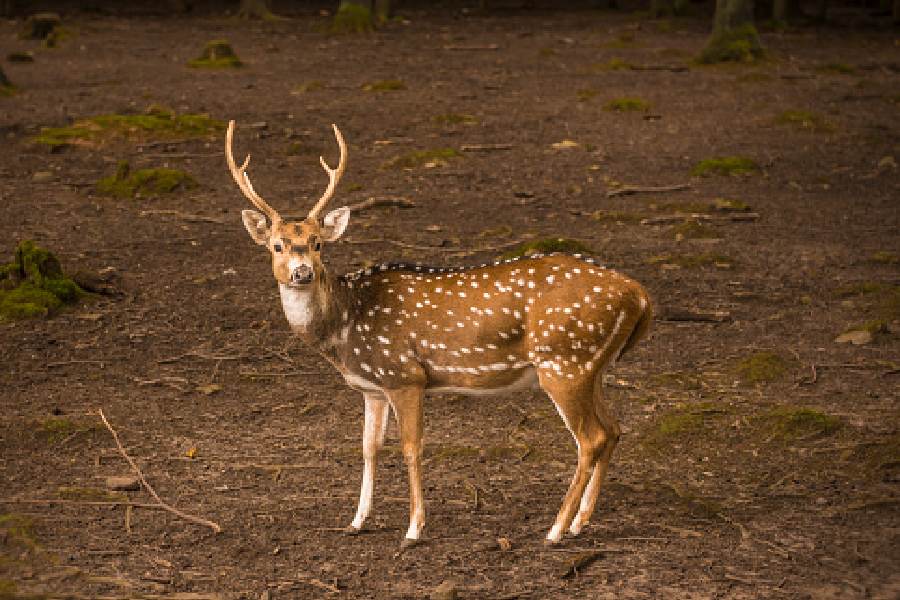Spotted deer (Axis axis) or chital is well distributed across India.
Its prime habitat ranges from Gujarat in the west to Bengal in the east, said a forest official.
In Bengal, they are commonly found in the Sunderbans, Ballavpur Wildlife Sanctuary in West Burdwan and the Buxa forest in Alipurduar district, among other places.
In tiger habitats like the Sunderbans, spotted deer form one of the most common prey base of the big cat, said forest officials.
The spotted deer has been categorised by the International Union for Conservation of Nature as of “least concern” as the number of animals in India is quite sufficient.
Deer are generally known as docile creatures who run away at the slightest hint of sound or movement. There are few recorded instances of the animals charging at or attacking humans.
“I have not seen a deer attack a human being intentionally in my 30 years of service. However, it can happen accidentally,” said a retired forest official.
A wildlife biologist said the spotted deer has a prolonged mating season because the generally warm climate in India allows females to remain fertile almost throughout the year.
“Because of that male spotted deer often fight among themselves to get an opportunity to mate. This peaks during the rainy season and winter. During those periods males tend to become aggressive and get involved in fights to emerge as the alpha male in the herd,” said a forest official, who has served in the Sunderbans and Buxa.
The official has supervised the release of spotted deer in the Buxa forest.
“The alpha males have long antlers that are quite sharp and strong. The antlers are known to tear off barks of trees when deer headbutt into them…. How much an antler will branch depends on the age of the deer,” said another official.
A senior forester said the antlers can cause serious damage to another animal or a human being.
While antlers help deer fend off attacks by other males or predators, they often get caught in branches or underbrush when a deer runs while being chased by a predator.
